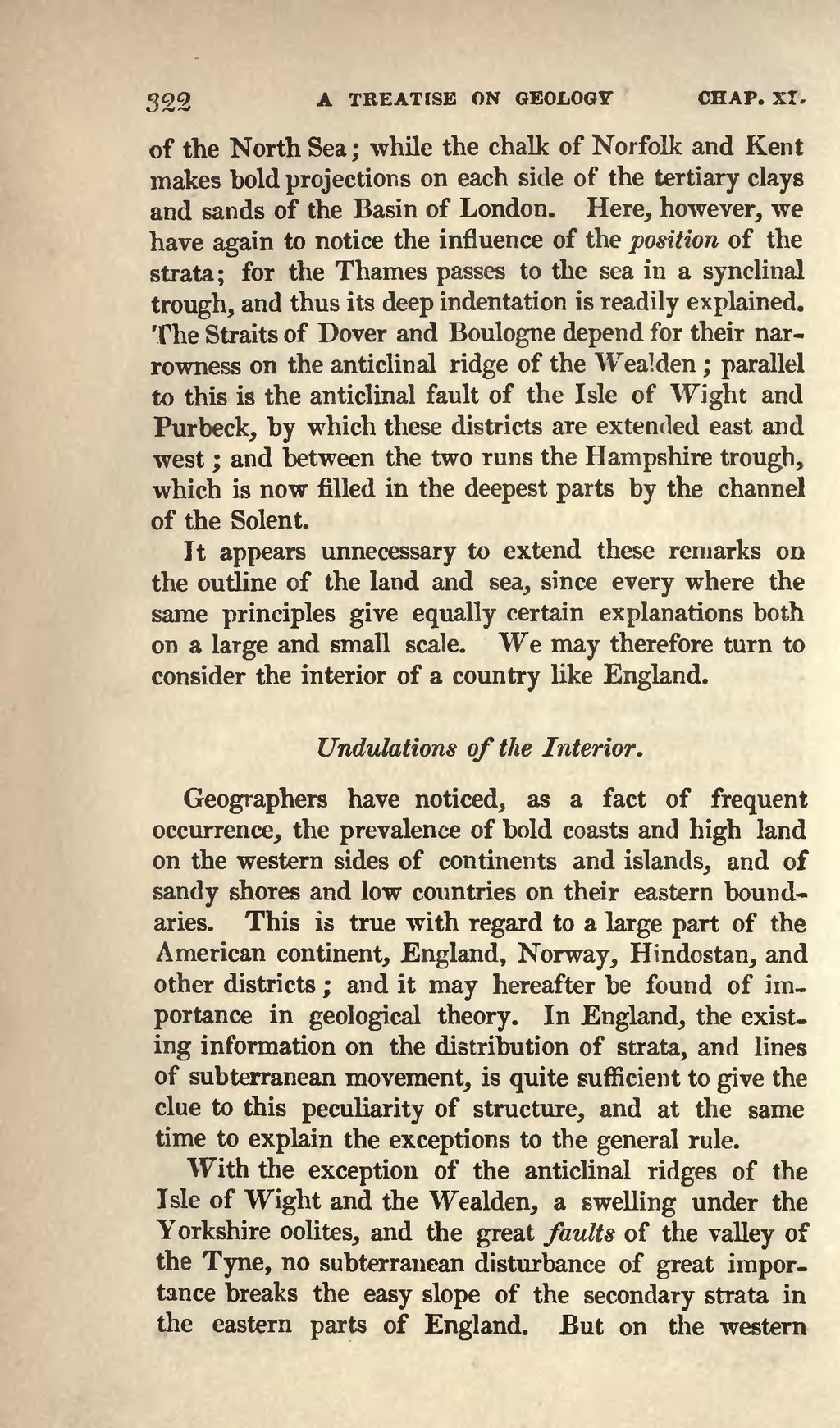of the North Sea; while the chalk of Norfolk and Kent makes hold projections on each side of the tertiary clays and sands of the Basin of London. Here, however, we have again to notice the influence of the position of the strata; for the Thames passes to the sea in a synclinal trough, and thus its deep indentation is readily explained. The Straits of Dover and Boulogne depend for their narrowness on the anticlinal ridge of the Weal den; parallel to this is the anticlinal fault of the Isle of Wight and Purbeck, by which these districts are extended east and west; and between the two runs the Hampshire trough, which is now filled in the deepest parts by the channel of the Solent.
It appears unnecessary to extend these remarks on the outline of the land and sea, since every where the same principles give equally certain explanations both on a large and small scale. We may therefore turn to consider the interior of a country like England.
Undulations of the Interior.
Geographers have noticed, as a fact of frequent occurrence, the prevalence of bold coasts and high land on the western sides of continents and islands, and of sandy shores and low countries on their eastern boundaries. This is true with regard to a large part of the American continent, England, Norway, Hindostan, and other districts; and it may hereafter be found of importance in geological theory. In England, the existing information on the distribution of strata, and lines of subterranean movement, is quite sufficient to give the clue to this peculiarity of structure, and at the same time to explain the exceptions to the general rule.
With the exception of the anticlinal ridges of the Isle of Wight and the Wealden, a swelling under the Yorkshire oolites, and the great faults of the valley of the Tyne, no subterranean disturbance of great importance breaks the easy slope of the secondary strata in the eastern parts of England. But on the western
